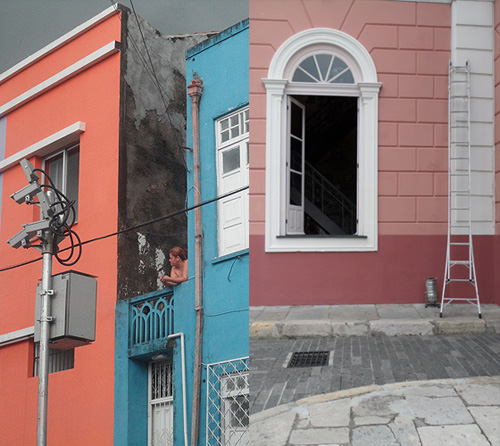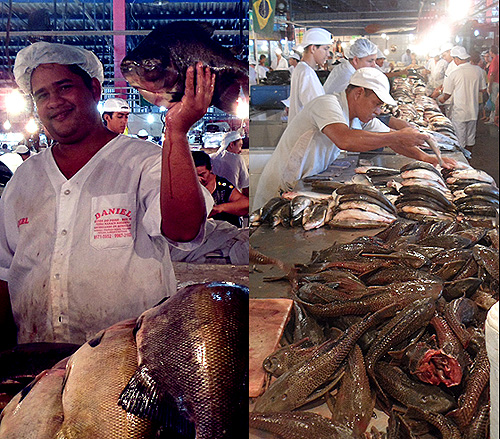No roads lead to Manaus. Smack dab in the middle of the Amazon Rainforest, the only way to reach Brazil’s seventh-largest city is by boat or airplane.
The bustling boat docks are more akin to floating bus stations, with boats crammed in and brazenly advertising what direction down the river they are headed. Men carrying oversized packages load onto these ships via slim, wooden planks. I even saw one guy climb a ramp while precariously balancing a piece of wood with three open buckets of tar on his back.
The boats aren't the only colorful part of Manaus, though. Each building seems painted in a different hue.
We made a quick stop at the local market. From plantains to piranha, there was just about everything you can imagine for sale.
Banana consumption in Manaus must be like corn consumption throughout the U.S. There was a whole football-field-sized section of the market dedicated solely to the fruit. This man proudly sat next to one of the largest stacks.
Another expansive section is the fish market, which I'm told is the largest in Brazil. Inside, a hundred-or-so men decked out in white uniforms chop up, package, and sell fish that's been freshly plucked from the river. Some of the ones on the right were still squirming around.
Outside the market, I spotted this lonely bike. Later, we met a man selling maps in a park.
Manaus itself is a city of about 1.8 million people (more than Philadelphia!) that is located where the Rio Negro and the Rio Solimões converge, creating the swirl effect seen above. The dark, black-ish water is the Rio Negro, while the murkier, muddy-looking water is the Rio Solimões. It really was a sight to see.
I was there to cruise along the Rio Negro. The water is so dark it's like a sheet of glass reflecting everything on the surrounding banks. I kept trying to capture this mirror effect, but no pictures seem to really do it justice.
Manaus is a far out destination, but one that is well-loved by ecotourists. On one boat trip, we breezed by the Ariau Amazon Towers, a collection of wooden towers built in the rainforest that are connected by snaking, raised catwalks (not a design decision, but instead a way to avoid flooding as the river rises and falls). Our guide told us the room with the balcony pictured above used to belong to Bill Gates – which also might explain why there is a huge cell phone tower outside of the hotel, the only place where we could get any reception during the five-day trip.










